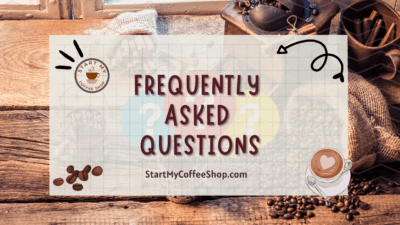Do you love coffee? Do you have a passion for entrepreneurship? Do you dream of owning your own business? If you answered “yes” to these questions, then creating your own coffee brand might be the perfect venture for you. Building a coffee brand can be a challenging and rewarding experience, but it requires a lot of planning, hard work, and dedication. In this article, we will provide you with tips and tricks to help you get started on creating your own coffee brand.
To create your own coffee brand, you will need to follow several steps. First, you should start by choosing the type of coffee beans you want to use, selecting a roaster to help you produce your coffee beans, and developing your brand identity, including your name, logo, packaging, and marketing plan. Then, you should set up your business, obtain any necessary permits and licenses, and determine your funding sources. Finally, you can launch your brand by building anticipation, hosting an event, leveraging influencers, offering promotions, and monitoring feedback
Why Create Your Own Coffee Brand?
Coffee is a beloved beverage that is consumed by millions of people every day. The global coffee market is estimated to be worth over $102 billion, and it continues to grow each year. By creating your own coffee brand, you have the opportunity to tap into this market and offer something unique and special to coffee lovers.
Creating your own coffee brand also allows you to control the quality and sourcing of your coffee beans. You can ensure that your beans are ethically sourced and roasted to your specifications. Additionally, owning your own coffee brand can be a fulfilling and creative endeavor. You can express your passion for coffee through branding, packaging, and marketing.
Conduct Market Research: Determine Demand for Your Coffee Brand
Before diving headfirst into creating your own coffee brand, it’s essential to conduct thorough market research to ensure there is a demand for your product. You don’t want to invest time and money into a venture that won’t generate sales. Here are some key questions to consider during your market research:
Identify Your Target Audience
Who do you want to sell your coffee to? Are you targeting coffee lovers, busy professionals, or health-conscious individuals? Knowing your target audience is critical because it will help you tailor your branding, messaging, and product offerings to appeal to them.
Understand Their Preferences and Behaviors
What type of coffee do your potential customers prefer? Do they have a preference for roast level, flavor profiles, or brewing methods? How often do they drink coffee, and when do they consume it? Understanding your customers’ preferences and behaviors will help you create products that cater to their needs.

Research Current Industry Trends
The coffee industry is constantly evolving, with new trends emerging regularly. It’s crucial to stay up-to-date with current industry trends, such as sustainable sourcing, innovative brewing methods, and unique flavor profiles. Keeping up with trends can help you stay relevant and appeal to the changing tastes of your customers.
Analyze Your Competitors
Who are your competitors in the coffee industry, and what are they doing well? What are their strengths and weaknesses? Analyzing your competition can help you identify gaps in the market and areas where you can differentiate your brand from theirs.
Differentiate Your Brand
Based on your research, how can you differentiate your brand from your competitors? What unique selling points (USPs) can you offer that will set your brand apart? This could be anything from eco-friendly packaging to an innovative brewing process or a unique flavor profile.
Read more about Attracting Investors for Your Coffee House Business: A Step-by-Step Business Plan Guide
Choose Your Coffee Beans: Key Factors to Consider
Choosing the right coffee beans is crucial to the success of your coffee brand. Offering a high-quality product is essential for building customer loyalty and generating repeat business. Here are some key factors to consider when selecting your coffee beans:
Origin: Where Are the Beans Grown?
The location where the coffee beans are grown can greatly impact their flavor profile. Different regions produce beans with distinct characteristics, such as acidity, body, and aroma. For example, coffee beans grown in Ethiopia are known for their bright acidity and fruity flavor notes, while beans from Brazil are often lower in acidity and have a nutty, chocolatey taste. Consider the flavor profile you want to offer your customers and choose beans that align with that.
Roast Level: Light, Medium, or Dark?
The roast level of the beans will affect the taste and aroma of the coffee. Light roast beans are more acidic and have a lighter body, while dark roast beans have a stronger, smokier flavor and a fuller body. Medium roast beans offer a balance between the two. Consider the taste preferences of your target audience and choose the roast level that will appeal to them.
Single-Origin vs. Blend: Which to Offer?
Single-origin beans come from a specific region or farm, and their flavor profile reflects the unique characteristics of that location. Blends, on the other hand, are a combination of beans from different regions and are designed to create a balanced flavor profile. Consider whether you want to offer single-origin beans that highlight the unique flavors of a particular region or blends that appeal to a wider audience.
Specialty vs. Commercial Grade: Which is Right for You?
Specialty grade coffee beans are considered to be the highest quality and are graded on a 100-point scale. These beans are carefully cultivated and harvested, resulting in a superior flavor profile. Commercial grade beans, on the other hand, are lower quality and are typically used in mass-produced coffee products. Consider whether you want to offer a premium product with specialty grade beans or a more affordable option with commercial grade beans.
By considering these key factors, you can select the right coffee beans for your brand and create a product that will appeal to your target audience. Remember that the quality of your beans will directly impact the quality of your coffee, so choose wisely.
Develop Your Brand Identity
In addition to the elements mentioned earlier, there are some other key factors that you should consider when developing your brand identity:
- Tagline: A catchy and memorable tagline can help to reinforce your brand identity and values. It should be short, memorable, and reflect your brand’s personality.
- Brand Story: Every brand has a story, and yours should be unique and compelling. Your brand story should communicate your values, mission, and history to your customers. It should also be consistent with your brand identity.
- Brand Voice: Your brand voice is how you communicate with your customers. It should be consistent across all platforms and reflect your brand personality. Consider whether you want your brand to sound playful, serious, or informative.
- Brand Colors: The colors you choose for your brand can have a big impact on how customers perceive your brand. Think about what emotions you want to evoke and what colors align with your brand personality. For example, green can represent sustainability, while red can represent energy and excitement.
- Brand Personality: Your brand personality is how customers perceive your brand. Think about what kind of personality you want your brand to have. Do you want it to be friendly and approachable, or sophisticated and exclusive?
By carefully considering these elements, you can create a strong brand identity that will help you stand out in the crowded coffee market.
Creating Your Own Coffee Brand: Tips and Tricks to Get Started
Now that you have a better understanding of the key factors involved in creating your own coffee brand, let’s take a look at some tips and tricks to help you get started.
Start Small
When starting a new coffee brand, it’s important to start small and grow gradually. This will help you to manage costs, refine your product, and build a loyal customer base.
Focus on Quality
The quality of your coffee is the most important factor in the success of your brand. Make sure you partner with a roaster who shares your commitment to quality and that you source high-quality beans.
Build a Strong Brand Identity
Your brand identity is what sets you apart from your competitors and helps to attract and retain customers. Take the time to carefully consider all of the elements of your brand identity and make sure they are consistent across all platforms.
Use Social Media
Social media can be a powerful tool for promoting your brand and connecting with your customers. Consider using platforms like Instagram and Facebook to showcase your brand and engage with your audience.
Be Flexible
The coffee market is constantly evolving, and it’s important to be flexible and willing to adapt to changing trends and customer preferences. Keep an eye on the market and be open to making changes as necessary.
Offer a Unique Experience
One way to differentiate your brand from your competitors is to offer a unique experience for your customers. Consider offering a coffee tasting experience, hosting events, or partnering with local businesses to create unique coffee blends.
Set up your Business

To set up your coffee business, you will need to consider several important steps. First, you will need to decide on the legal structure of your business, whether it will be a sole proprietorship, LLC, or corporation. This will depend on your individual situation, including your personal liability, tax considerations, and business goals.
Next, you will need to research the permits and licenses required in your state or country to operate a coffee business. This may include business licenses, health permits, and food service permits. Make sure to also comply with any regulations regarding food safety and quality control.
Another important factor to consider is funding. Determine how much funding you will need to start your business and where you will source funding from. This may include personal savings, loans from financial institutions, or investments from friends and family.
Location is another key consideration. Determine where you will operate your business from, whether it will be a physical location or an online store. You will also need to consider the costs associated with leasing or purchasing a commercial space, as well as any equipment and supplies you will need to purchase.
Read more about How to Create a Successful Coffee Shop Investment Plan: The Coffee Shop Business Plan Blueprint
Create a Marketing Plan
Creating a comprehensive marketing plan is crucial for the success of any coffee brand. It allows you to identify your goals, target audience, messaging, and tactics, as well as allocate your marketing budget effectively. Here are some elements to consider when creating your marketing plan:
Goals: Start by defining your marketing goals. What do you want to achieve with your marketing efforts? Do you want to increase brand awareness, generate more sales, or increase customer loyalty? Make sure your goals are specific, measurable, achievable, relevant, and time-bound (SMART).
Target Audience: Determine who your target audience is. Consider factors such as demographics, interests, behaviors, and purchasing habits. Understanding your target audience will help you tailor your messaging and tactics to better resonate with them.
Messaging: Your messaging should reflect your brand identity and what sets your coffee brand apart from others. What is your unique selling proposition (USP)? What value do you provide to your customers? Craft messaging that appeals to your target audience and highlights the benefits of your coffee.
Tactics: Determine which marketing tactics you will use to reach your target audience. Some common tactics for coffee brands include social media, email marketing, events, influencer partnerships, and collaborations. Choose tactics that align with your goals and target audience.
Budget: Allocate your marketing budget to each tactic based on your goals and expected return on investment (ROI). Consider both the cost of the tactic and the potential revenue it can generate.
Launch Your Brand
Creating a comprehensive marketing plan is crucial for the success of any coffee brand. It allows you to identify your goals, target audience, messaging, and tactics, as well as allocate your marketing budget effectively. Here are some elements to consider when creating your marketing plan:
Goals: Start by defining your marketing goals. What do you want to achieve with your marketing efforts? Do you want to increase brand awareness, generate more sales, or increase customer loyalty? Make sure your goals are specific, measurable, achievable, relevant, and time-bound (SMART).
Target Audience: Determine who your target audience is. Consider factors such as demographics, interests, behaviors, and purchasing habits. Understanding your target audience will help you tailor your messaging and tactics to better resonate with them.
Messaging: Your messaging should reflect your brand identity and what sets your coffee brand apart from others. What is your unique selling proposition (USP)? What value do you provide to your customers? Craft messaging that appeals to your target audience and highlights the benefits of your coffee.
Tactics: Determine which marketing tactics you will use to reach your target audience. Some common tactics for coffee brands include social media, email marketing, events, influencer partnerships, and collaborations. Choose tactics that align with your goals and target audience.
Budget: Allocate your marketing budget to each tactic based on your goals and expected return on investment (ROI). Consider both the cost of the tactic and the potential revenue it can generate.
Conclusion
In conclusion, starting your own coffee brand requires careful planning and execution. You must conduct market research, select the right coffee beans and roaster, develop your brand identity, set up your business, create a marketing plan, and launch your brand successfully. By following these steps and taking into account the factors discussed, you can create a unique and successful coffee brand that stands out in a crowded market. With dedication, hard work, and a passion for coffee, you can turn your dream into a reality and become a successful coffee entrepreneur.
Frequently Asked Questions:

What should I include in my brand identity for my coffee brand?
Your brand identity should include a memorable name, recognizable logo, visually appealing packaging, and a marketing strategy that aligns with your brand values.
What are the necessary steps to set up a coffee business?
Determine the legal structure, research permits and licenses required, source funding, determine location, and consider staffing needs.
What elements should be included in my coffee brand’s marketing plan?
Your marketing plan should include goals, target audience, messaging, tactics, and budget.
What tips can help ensure a successful launch for my coffee brand?
Build anticipation through social media and email marketing, host a launch event, partner with influencers, offer promotions, and monitor feedback.
To learn more on how to start your own coffee shop checkout my startup documents here
Please note: This blog post is for educational purposes only and does not constitute legal advice. Please consult a legal expert to address your specific needs.

Hi! I’m Shawn Chun
My adventure in coffee began when I first launched my first coffee shop back in the early 2000s. I had to figure out so many things on my own and to make it worse within 2 years of opening two large corporate coffee chains moved in just blocks away from me!
As I saw smaller and even some larger coffee shops in the neighborhood slowly lose customers to these giant coffee chains and slowly close up shop, I knew that I had to start getting creative…or go out of business.
I (like you may be) knew the coffee industry well. I could make the best latte art around and the foam on my caps was the fluffiest you have ever seen. I even had the best state-of-the-art 2 group digital Nuova Simonelli machine money could buy. But I knew that these things alone would not be enough to lure customers away from the name brand established coffee shops.
Eventually, through lots of trial and error as well as perseverance and creativity I did find a way to not only survive but also thrive in the coffee/espresso industry even while those corporate coffee chains stayed put. During those years I learned to adapt and always faced new challenges. It was not always easy, however, in the end, I was the sole survivor independent coffee shop within a 10-mile radius of my location. Just two corporate coffee chains and I were left after that year. All told the corporate coffee chains took down over 15 small independent coffee shops and kiosks and I was the last one standing and thriving.
Along the years I meet others with the same passion for coffee and I quickly learned that it is not only “how good a barista is” that makes a coffee shop successful, but the business side of coffee as well.
Hence why I started this website you are on now. To provide the tools and resources for up and coming coffee shop owners to gain that vital insight and knowledge on how to start a coffee shop successfully.
Stick around, browse through my helpful blog and resources and enjoy your stay! With lots of LATTE LOVE!
Shawn







